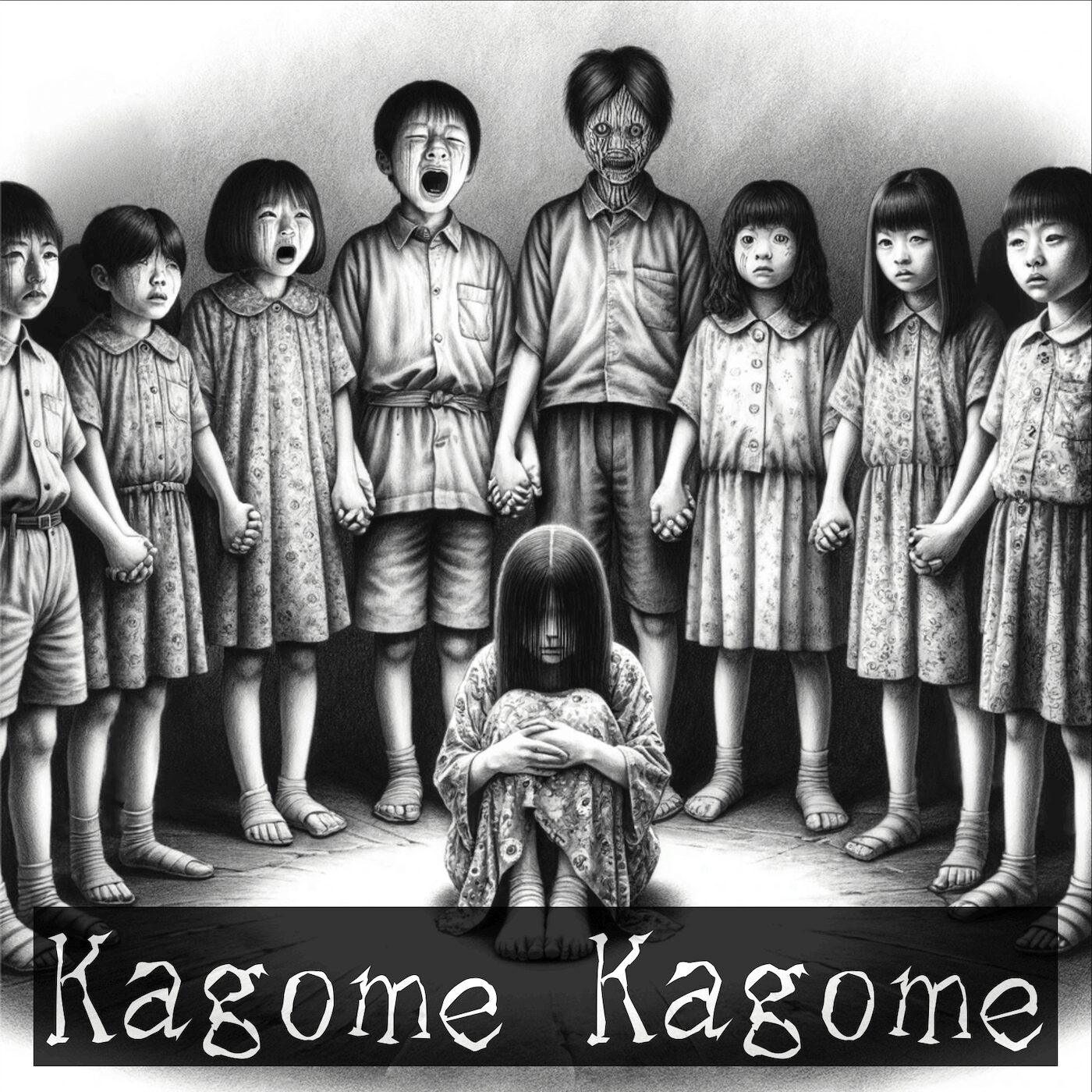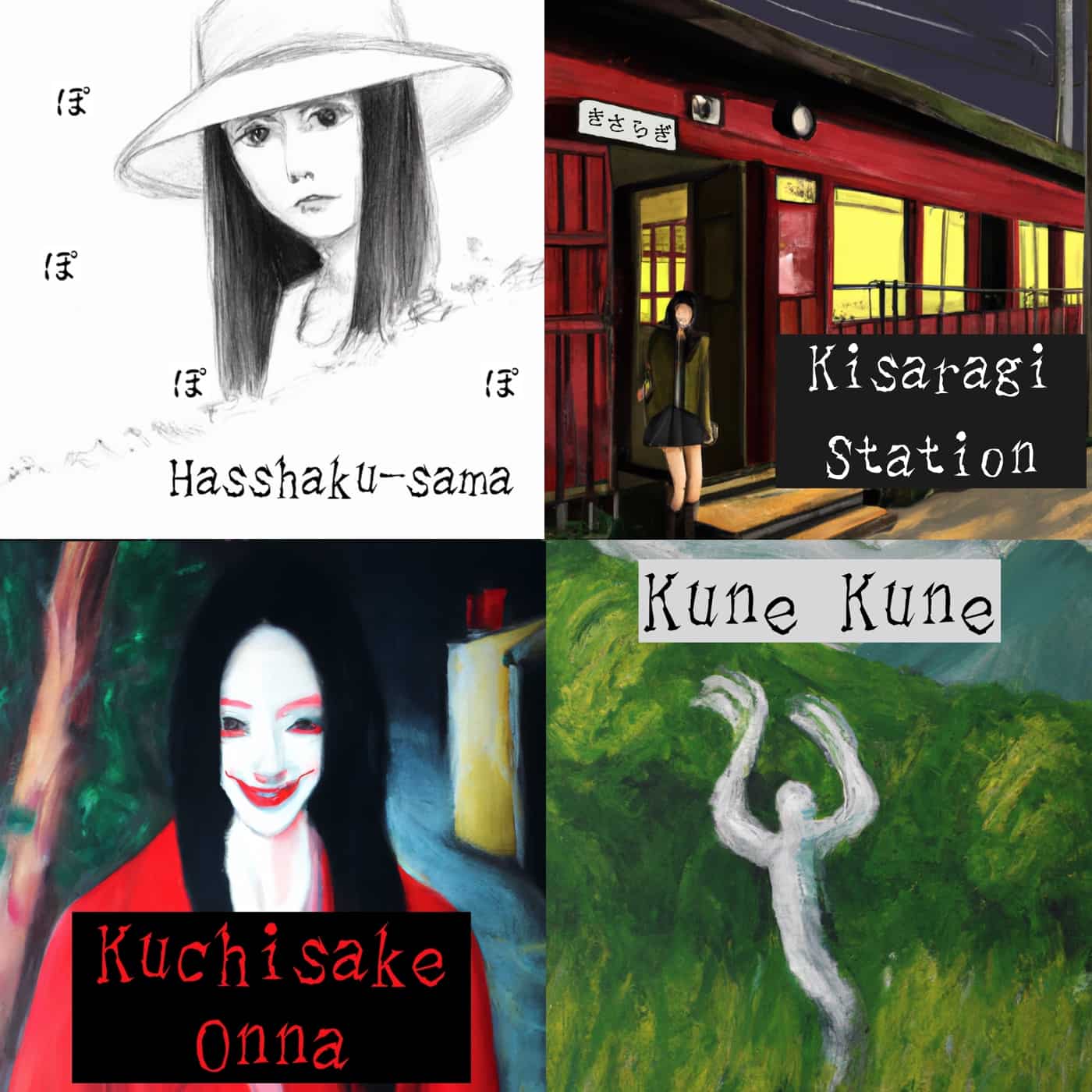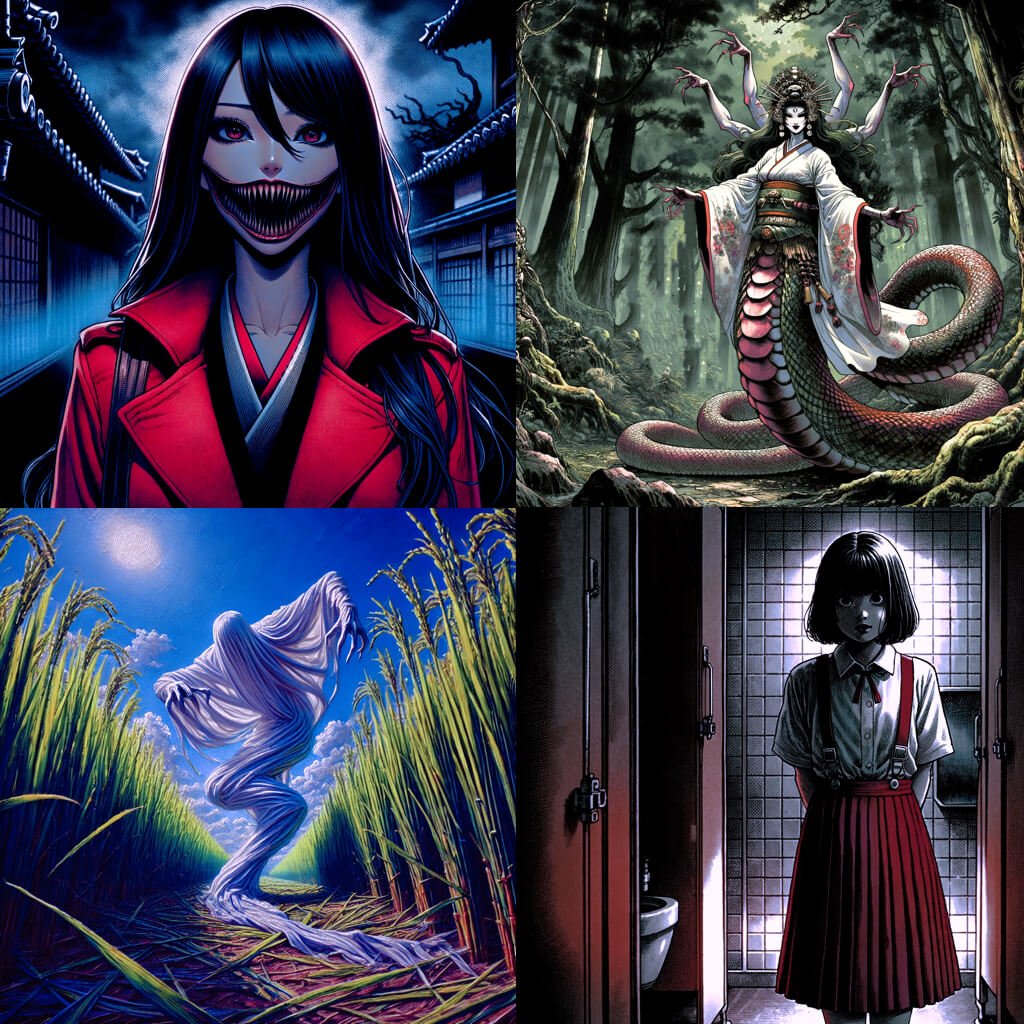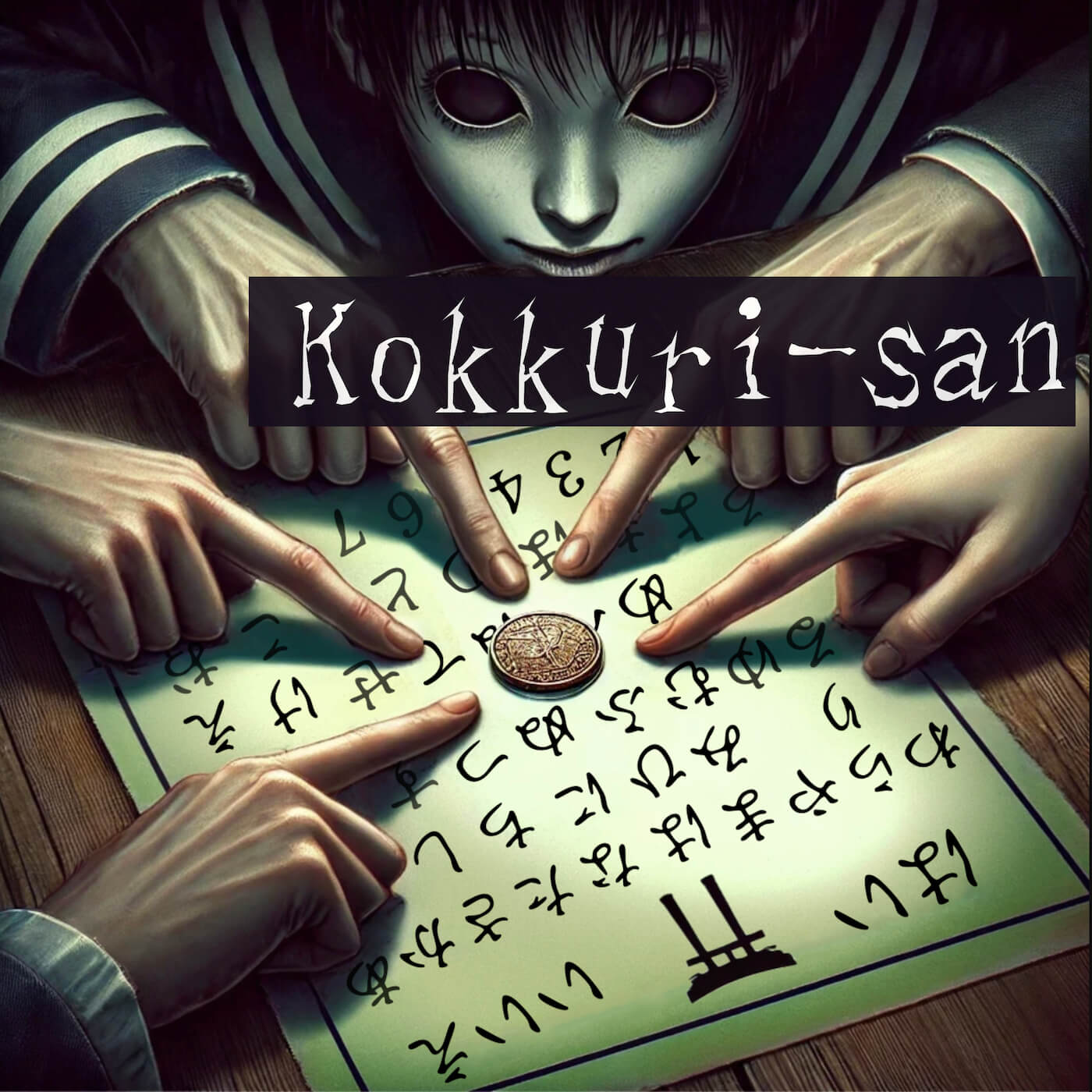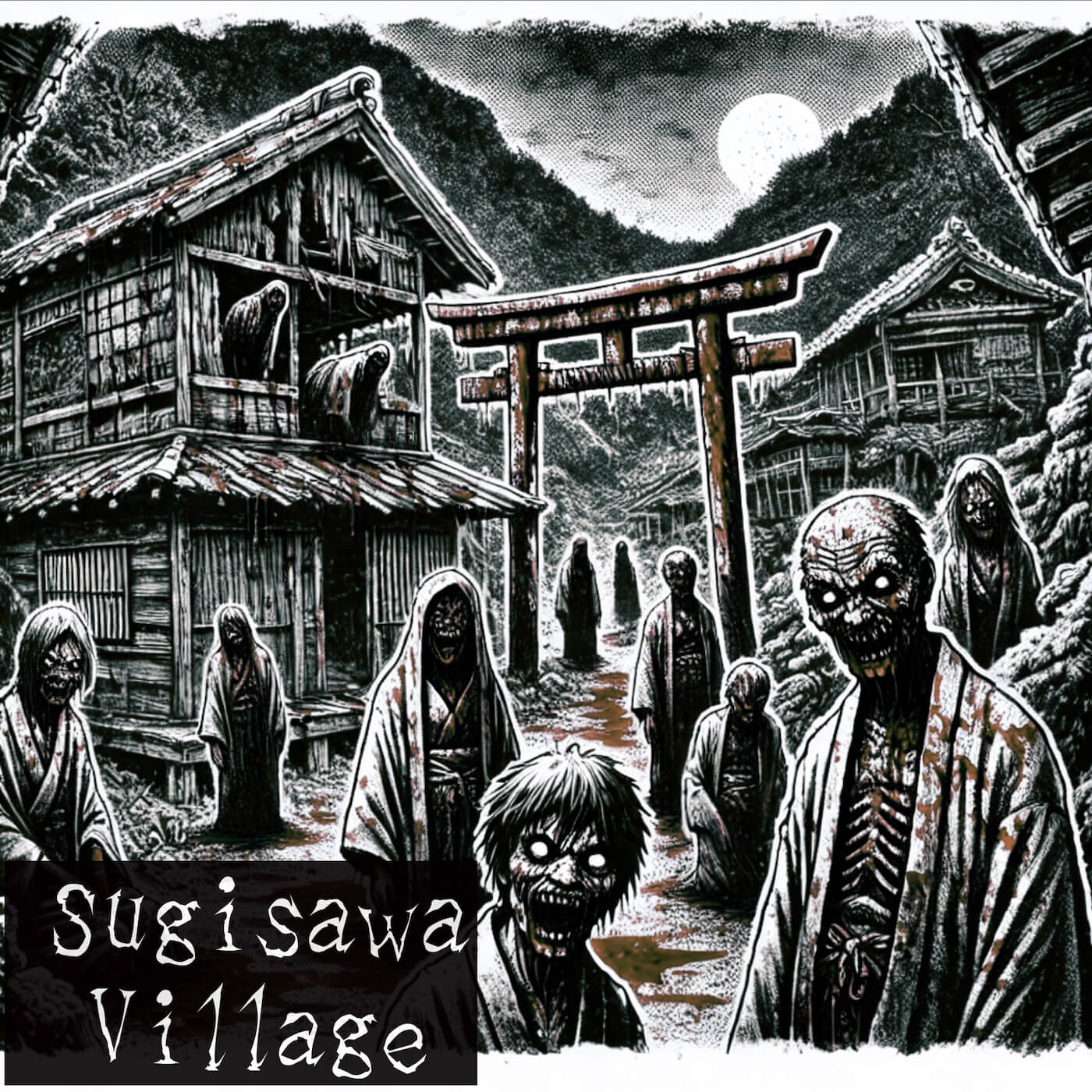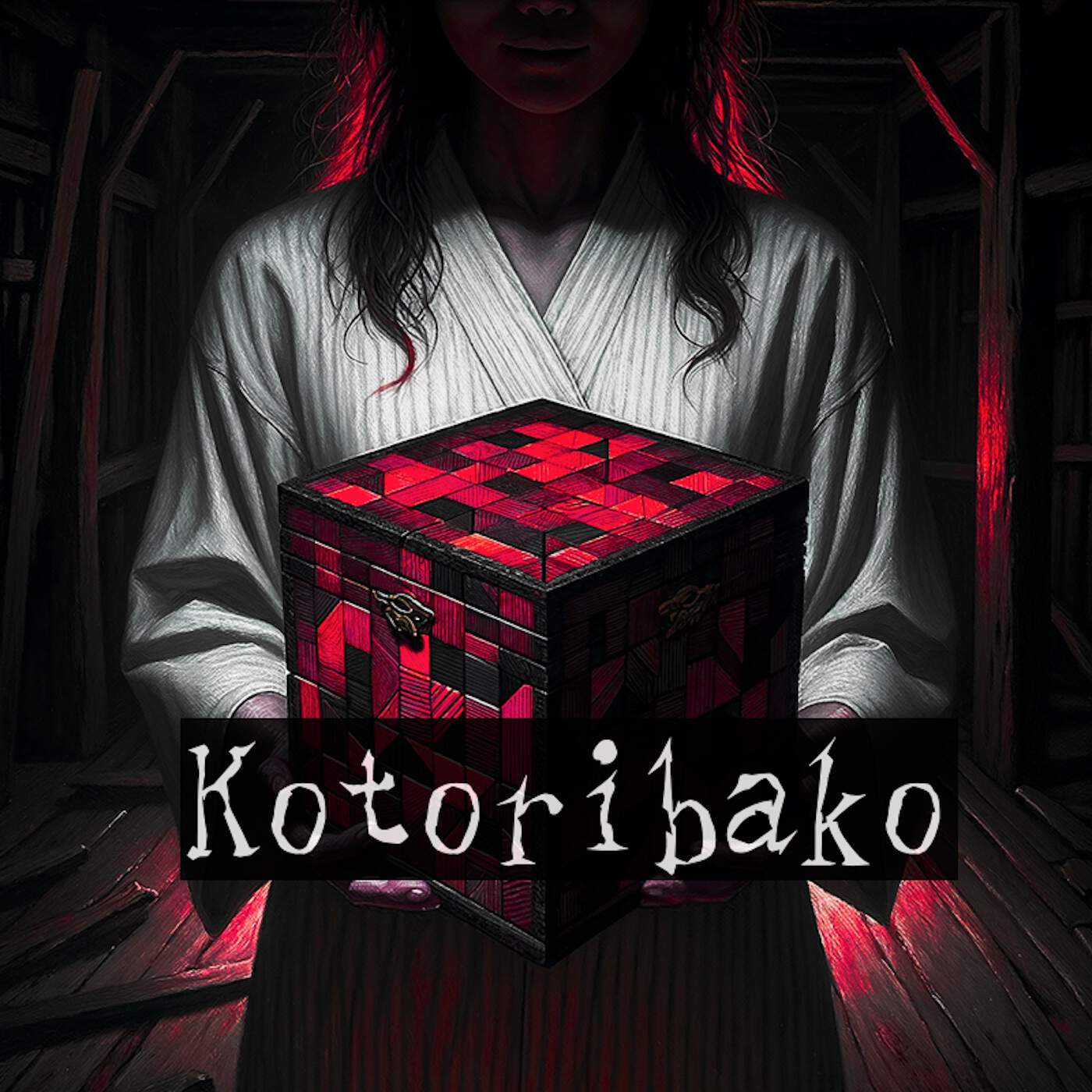Today, we introduce you to Kagome Kagome, a popular Japanese children’s game/song.
A tranquil scene with children happily singing and playing. But that song may be hiding a fear you don’t know about…
What is Kagome Kagome In Japanese Creepypasta?
Kagome Kagome is a traditional Japanese children’s game, and also the name of the song sung during the game.
A play with almost the same lyrics as those of the present day seems to have existed in the late Edo period (the mid-18th century). However, the actual date of its establishment and the original form of the lyrics are unknown, and the author has not been identified.
While it is a children’s play song, its melancholy melody and mysterious lyrics have given rise to various interpretative musings and urban legends.
Kagome Kagome Creepypasta Story (podcast)
*You can hear the song’s full melody and singing voice at the end of the podcast episode (around 3:53).
The Lyrics & how to play Kagome Kagome game
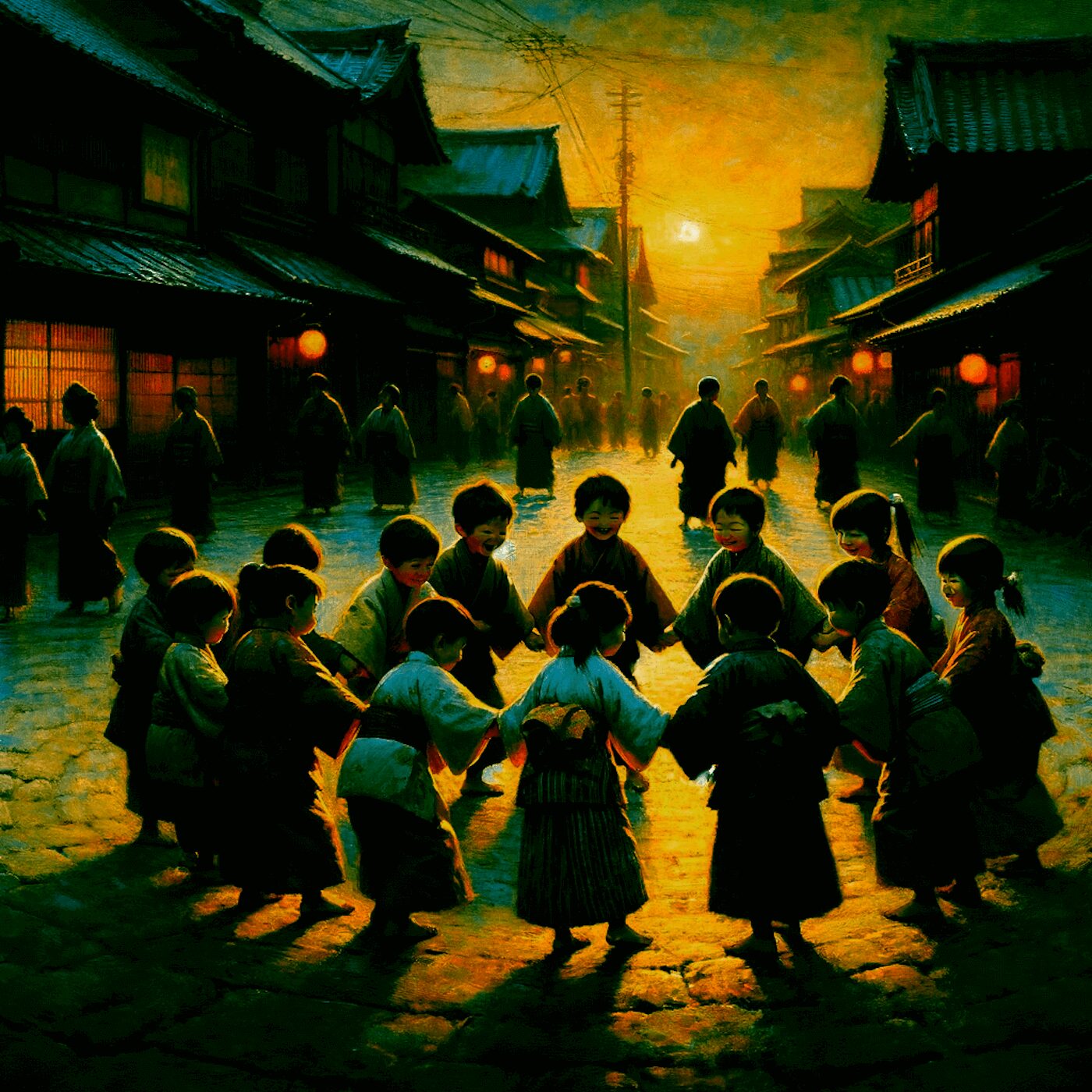
Japanese Lyrics and translation of the song
Here are the lyrics of the song in Japanese with sound guidance in English (romaji).
- かごめかごめ、籠の中の鳥は : Kagome Kagome, Kago no naka no tori wa
- いついつ出やる、夜明けの晩に : Itsu itsu deyaru, Yoake no ban ni
- 鶴と亀が滑った : Tsuru to kame ga subetta
- 後ろの正面だあれ : Ushirono shoumen da are
And, here are the translations of each line.
- Kagome Kagome, the bird in a cage.
- When will it come out, in the evening of the dawn
- The crane and the turtle have slipped
- Who is right behind you?
In fact, the lyrics vary in different regions of the country, and the one described here is only one of the most popular examples.
It should also be noted that the lyrics can be interpreted differently depending on how they are read, as it is not clear which word modifies which other word. As such, the translations above can also be different.
How to play the game
- One person is to play the role of “Oni” (demon or ogre in English) in a group of several kids.
- The Oni sits in the centre with the eyes closed, and other children surround the Oni in a circle.
- The children go around singing the song in unison.
- When the song ends, the Oni guesses who is right behind him/her.
When it comes to guessing the person behind Oni at the end of the song, Oni can ask the people around him/her for clues, or can ask the person behind to speak and judge from their voice and their speaking habits.
Also, due to the nature of the game, the more people playing at the same time, the higher the difficulty level.
What could be the hidden meaning of Kagome Kagome song?
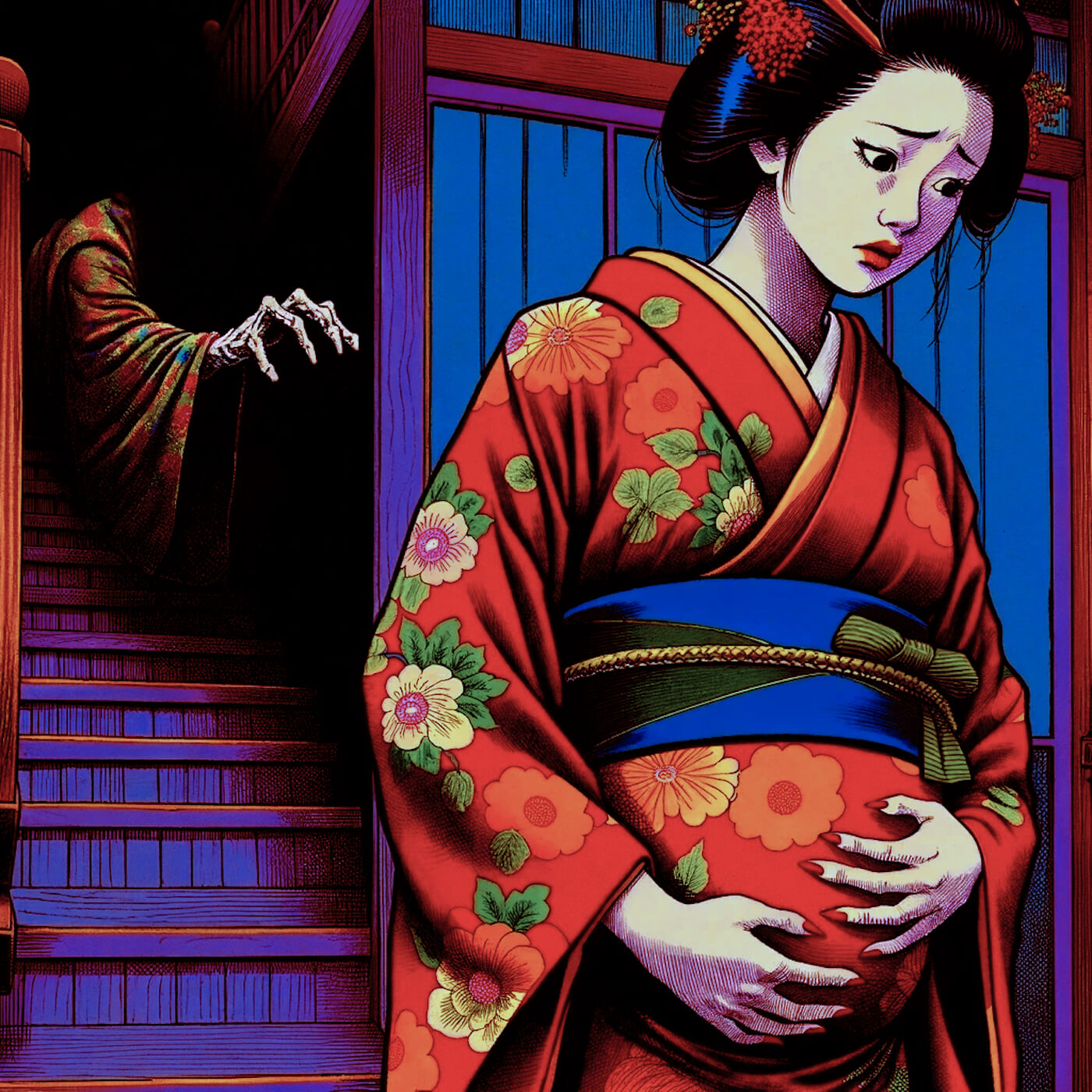
As explained earlier, several possible interpretations of the song exist. I will share some popular theories here.
Finding the murderer of a pregnant woman
There is a section in the lyrics that goes like, “Kago no naka no tori wa”. The literal translation is ‘the bird in a cage’, but this may be a metaphor for the cage being a pregnant woman and the bird being the baby-to-be in the womb, respectively.
There is also a part in the second half of the lyrics where “Tsuru to kame ga subetta” (the crane and the turtle have slipped). In Japan, both cranes and turtles are considered animals that symbolize longevity, so this part may imply that life has slipped and been lost, which means death.
Then, the final part of the lyrics, “Ushirono shoumen da are” (who is right behind you?), implies that the pregnant woman was pushed from behind and murdered, and the song is accusing whoever the culprit is.
A prostitute slipping away with her saver
We can also write Kagome in Kanji (Japanese character) as 籠女, which translates to “the woman in a cage”. That might be the reference to a woman who was trapped as a prostitute.
In the Edo period (1603-1868), many women became prostitutes against their will. For example, by being forced to sell themselves due to poverty.
So, “Itsu itsu deyaru” (When will it come out) in the lyrics may have implied a prostitute lamenting when she would be released from that situation.
On the other hand, some of the men who went to these prostitutes seemed to be seriously in love with them and wanted to liberate those women. However, in those days, it was considered a mortal sin to take a prostitute out of the house. And if found, they would be brutally punished by torture or other means.
The only way left was to slip away in secret. The line “Yoake no ban ni, Tsuru to kame ga subetta” (In the evening of dawn, The crane and the turtle have slipped) might indicate that a prostitute and a man slipped away under cover of darkness from night to dawn.
As they were escaping in such a way, they must have been concerned about the pursuers coming up behind them. The last part of the lyrics, “Behind you, the front, that’s it”, maybe expresses such fear of what is behind them.
Other theories also vary…
Other theories range from…
- The song is about a convicted criminal awaiting execution.
- The song secretly indicates the location of the buried treasure of the Tokugawa family, who ruled the Edo period.
- The song may also have descended from Jewish people and been related to the Ark of the Covenant because of the similarities in the pronunciations.
- And a lot more…
children after the experiment of the Nazis (Urban legend)
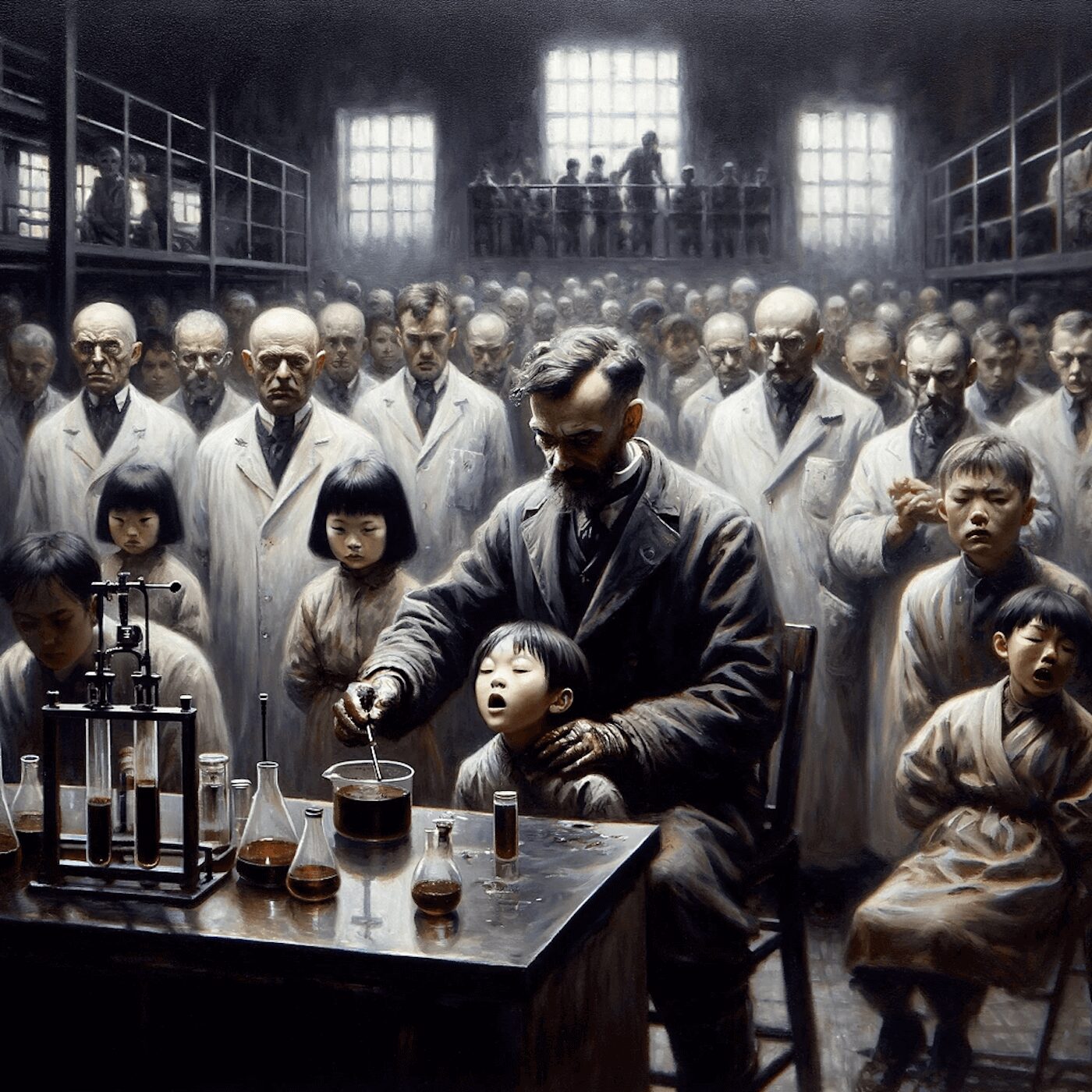
The stories associated with the Kagome Kagome song include this urban legend related to Nazis.
It is clear from documents found after the war that the German Nazis conducted numerous human experiments in secret during the Second World War.
One such experiment was an experiment in immortality. Imagine that In wartime, immortal soldiers would be the best asset.
The hypothesis proposed by Nazi scientists at the time was that as we age, a kind of ‘kill switch’ begins to operate in the brain. When this switch is triggered, the brain starts to degrade every function of the body, eventually leading to death. The idea to achieve biological immortality was by stopping this switch somehow.
They chose Children as the subjects for this experiment. This could be to better understand how the brain works with smaller bodies. Also, their brains were thought to have not yet triggered the kill switch. The plan to perform brain surgery on them was going ahead.
Inhumane experiments carried out in an orphanage
Due to the unethical and inhumane nature of the experiments, the Nazis decided that they couldn’t carry out the experiments in Germany and chose Japan, an ally at the time, as the alternative location.
The final site chosen was an orphanage in Hiroshima Prefecture (some say the neighbouring Shimane Prefecture). The children underwent a series of brain surgeries, but one by one, the victims fell into failure. The children’s bodies were inadvertently dumped deep in the forest. As the children were orphans with no relatives, no one looked after them, and they were treated as disappeared in obscurity.
Meanwhile, a success case emerged as the experiment continued. The switch was successfully removed from the youngest girl in the orphanage.
After that, there have been several more successes, but at the same time, many of them have shown unusual behaviour. Some scowled and followed the researchers. Others had retained supernatural abilities, such as asking questions relating to information about the past and private life that the child couldn’t possibly know.
One of the unusual behaviours of the children was that they began to play a particular game more frequently than before. That was Kagome Kagome. They would circle one child, singing around him or her while making frightening faces.
That fear, still somewhere…
Later, with Germany’s defeat, these experiments ceased, and the orphanage was abandoned. However, the children who have become immortal still haunt the abandoned orphanage, even today.
They request visitors to play Kagome Kagome with them. If the visitor says yes, the children surround him or her, and the play begins.
It is said that some visitors to the orphanage never return afterwards. Assumingly, they have lost on Kagome Kagome and… I’ll leave the rest to your imagination.
“Kagome kagome…” Let’s play the game
Growing up in Japan, it was fun to play Kagome Kagome, but its song also evoked a somewhat sad atmosphere in my childhood.
The obscure and mysterious lyrics may have hidden truths that have not been discovered yet…
↓Check out these related articles as well to find out more about Japanese urban legends/creepypastas!
Find Your Kaidan!
Discover your favourite Japanese scary/horror stories
Categories
Let’s talk
Would you like to analyse the story, make theories on it, and share your thoughts?
Please join our Discord channel
where you can share your thoughts and interact with other Kaidan lovers!
